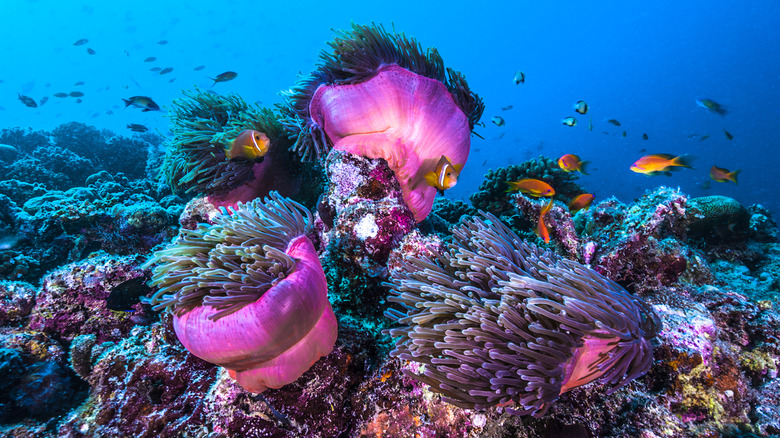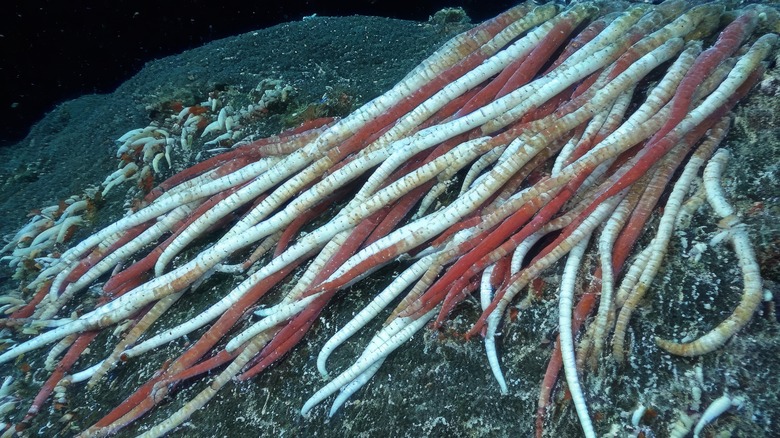The Strange Place Life Was Found In The Pacific Ocean
The ocean is a vast body and the largest inhabitable space on Earth, covering about 70% of the surface. Up to June 2024, though, researchers have only been able to map about 26% of the seafloor with modern technology. Yet, they still know more about it than the wildlife that call it home, which is why the discovery of life underneath the East Pacific Rise is so surprising.
During the summer of 2023, scientists used the SuBastian (an underwater, remotely operated vehicle) to learn how tube worms, which anchor their narrow bodies to the seafloor, spread from one hydrothermal vent to another. Hydrothermal vents are cracks in the seabed that spew geothermally heated water. The researchers suspected that the invertebrates spread through cavities in the ocean floor before the larvae anchor to it.
While the team was digging around near the Fava Flow Vents along the East Pacific Rise, they found larger wildlife — giant tube worms, sea snails, and other marine invertebrates — living beneath the ocean's crust. The findings, published in a 2024 study in Nature Communications, confirm their theory. The marine life was about 4 inches under the ground, but the scientists don't know how far down or out the tiny caves go, so the larger animals may be able to survive even farther down.
Understanding and protecting marine communities along the East Pacific Rise
The East Pacific Rise is an underwater chain of volcanoes that stretches south and slightly west for 8,000 to 10,000 miles, following a sickle-shaped curve from near the mouth of the Gulf of California. A multitude of sea creatures — crabs, mussels, shrimp, tube worms, and other unique species — live near the area's hydrothermal vents. Plus, previous research published in Frontiers in Microbiology in 2013 revealed microbes surviving underground on nutrients created when the seawater and magma mix, rather than on photosynthesis-stimulating sunlight.
As scientists continue investigating this phenomenon, they see more of a need to legally protect the hydrothermal vent ecosystems from deep-sea mining of the rare minerals, such as cobalt and nickel, that the rock contains. They want the chance to understand these habitats before they're destroyed, which could help them comprehend the conditions for life beyond Earth, such as below the icy crust of Jupiter's satellite Europa. In such distant and alien environments, any potential extraterrestrial life would not be nurtured from solar energy and would instead rely on other sources of energy, such as those found in the East Pacific Rise.

